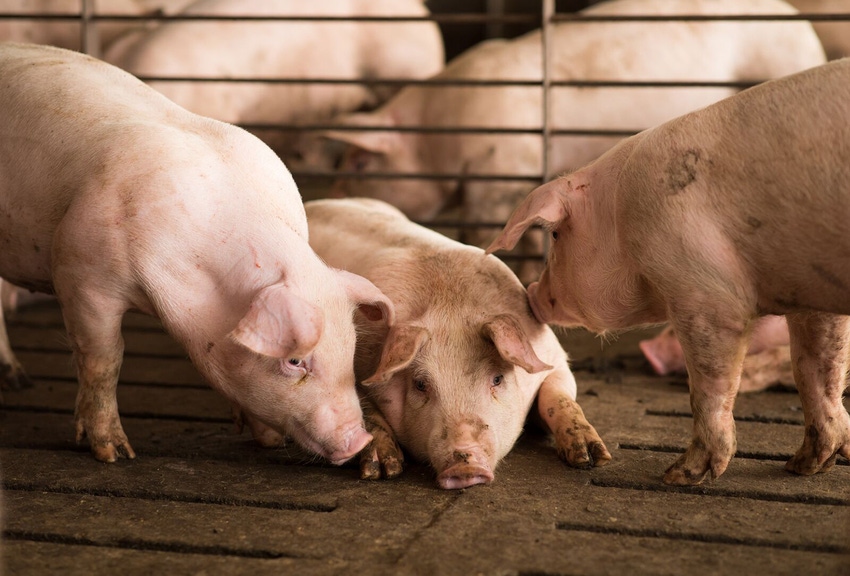SHIC investigates CPV2 potential risk to U.S. swine
Research determined that although canine parvovirus 2 is capable of spillover into swine, the virus does not appear to be highly pathogenic to pigs.
May 16, 2022

In October 2020, diagnostic laboratory sequencing of lung tissue from a U.S. pig revealed the presence of canine parvovirus 2. The unexpected detection of CPV2 was assumed to be an incidental finding in lung tissue lacking significant lesions and not a contributor to disease. However, since this was the first known detection of CPV2 in swine, SHIC funded research to determine if CPV2 may be an emerging disease risk to U.S. swine.
CPV2 is a non-enveloped single-stranded DNA virus which infects domestic dogs globally, resulting in gastrointestinal disease and immunosuppression. However, CPV2 originated from a cross-species transmission of feline parvovirus into dogs over 40 years ago and has since been detected in many wildlife species. Led by Ben Hause, an assistant professor at South Dakota State University, the SHIC-funded research project had three objectives to determine the cross-species transmission and pathogenesis risk to swine:
First, tissues previously submitted to the diagnostic lab from U.S. swine were screened for the presence of CPV2 genome using PCR. Approximately 13% of tissues had CPV2 detected at relatively low DNA levels (mean Ct = 31).
Second, serum samples previously submitted to the diagnostic lab from U.S. swine were screened for the presence of CPV2 antibodies using hemagglutination inhibition assays. Approximately 66% of serum samples had CPV2 antibodies detected at low levels (most titers ≤ 80).
Third, colostrum-deprived one day old neonatal pigs were inoculated through the oronasal route with CPV2 to assess their ability to replicate the virus and the ability of CPV2 to induce disease. Experimentally inoculated swine did not appear to develop productive CPV2 infections.
Overall, research determined that although CPV2 is capable of spillover into swine, the virus does not appear to be highly pathogenic to pigs. Continued vigilance of the industry is needed as mutations of CPV2 over time may alter the epidemiological situation and increase the disease risk to U.S. swine.
SHIC, launched by the National Pork Board in 2015 solely with Pork Checkoff funding, continues to focus efforts on prevention, preparedness and response to novel and emerging swine disease for the benefit of U.S. swine health. ASHIC is funded by America's pork producers to fulfill its mission to protect and enhance the health of the U.S. swine herd.
Source: Swine Health Information Center, which is solely responsible for the information provided, and wholly owns the information. Informa Business Media and all its subsidiaries are not responsible for any of the content contained in this information asset.
You May Also Like



